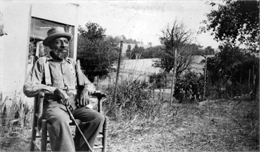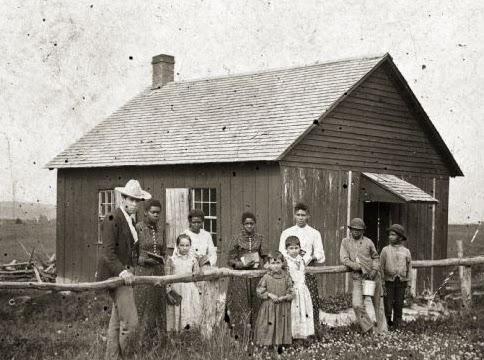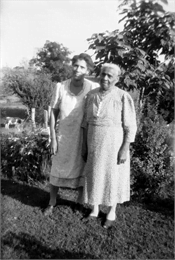
Pleasant Ridge: A Community of Black Farmers in Wisconsin
In 1850 Charles Shepard, a formerly enslaved man from Virginia, and his family moved to rural southwestern Wisconsin near present-day Beetown in Grant County. The others in the party included his wife Caroline (nee Brent); their three children Harriet, John, and Mary; Charles’ brother, Isaac Shepard; and Sarah Brown, who would marry Isaac. They settled into the area and eventually established a community of African American farmers called Pleasant Ridge in the years before the Civil War, which began in 1861. Today, a historical marker commemorates the community’s location and nearby the Pleasant Ridge Cemetery remains as the resting place of many of the community’s residents.
In 1848 the Shepard’s enslaver, Sarah Edmonds, of Fauquier County, Virginia, died and freed them in her will. They traveled to Wisconsin with William Horner, her nephew, who hoped to prosper at lead mining. Horner soon discovered that profitable lead mining was diminishing, but he had the means to purchase over 1,000 acres of farmland in Grant County. The Shepards initially worked for Horner on the newly acquired land. After a few years, Charles and Isaac saved enough wages to purchase 200 acres from Horner and establish homesteads of their own. Soon after, the Shepards were joined in Pleasant Ridge by others escaping enslavement in Tennessee, Missouri, and Arkansas including the Grimes Family and the Greene Family.
The Civil War and After
When the Civil War broke out in 1861, Pleasant Ridge contributed its share of soldiers. Black recruits were initially prohibited by federal law, but when that restriction was lifted in 1863, Charles Shepard and his son, John, both walked to Prairie du Chien to enlist in the Union Army. Charles served with the 50th U.S. Infantry Regiment and died at Vicksburg. John, a private in Company K, 42nd Regiment, died of disease at the end of the war in Cairo, Illinois on his way home to Pleasant Ridge.
At least eight Black veterans returned to Pleasant Ridge after their service and some became farm owners. During this time, the Greene, Grimes, and Shepard families comprised the core of the community. If not already married, those veterans married women from those three families and started families of their own growing the population. White farmers and families also moved into the area in the years after the war.

Pleasant Ridge Schoolhouse, ca. 1890
Schoolhouse of District #5 in Pleasant Ridge built on land donated by Isaac Shepard. Both Black and White residents built, attended, and taught at the school. People pictured include: F.J. Webb (teacher), Rina Gadlin, Bessie Hoffman, Nettie Gadlin, Cora Sheppard, Jennie Hoffman, May Hoffman, Emma Green, Oscar Grimes, and Lester Green.
Courtesy of Grant County Historical Society, Cunningham Museum
Over the next several decades, Pleasant Ridge grew in population and size. In 1873 Pleasant Ridge residents built one of the first integrated schools in the nation. Black and White students studied together at District School #5, and they learned from Black and White teachers. Some pupils grew up to graduate from college and become teachers themselves.
The population of Pleasant Ridge peaked at around 100 residents about evenly split between Black and White families. These residents established a community cemetery in 1883. Prior to that, the Shepards maintained a cemetery on their property from 1858-1896. Residents also built the United Brethren Church in 1884. Thomas Greene built a community hall on his property in 1898, which became the site for gatherings and celebrations including an annual barbecue each August.
The Peak and Decline
Black residents of Pleasant Ridge owned nearly 700 acres of farmland in 1895. Isaac Shepard became one of the most prosperous farmers in the region. In 1906 the women of the community formed the Autumn Leaf Society. Modeled after popular social clubs and literary circles of the day, the Society was responsible for organizing dances and dinners, as well as supporting the care of the Pleasant Ridge Community Cemetery. They were the major sponsor of the annual reunion barbecue for decades in the 1900s.

The children and grandchildren of the original families faced very limited economic and marriage opportunities given the community’s small size and rural setting. Most moved away to cities or other states to continue their schooling and seek careers. Four descendants achieved success in the fields of education, architecture, dentistry, and law respectively. Ollie Green Lewis, a descendant of the Greene and Shepard families and the last Black resident, died at Pleasant Ridge in 1959.
